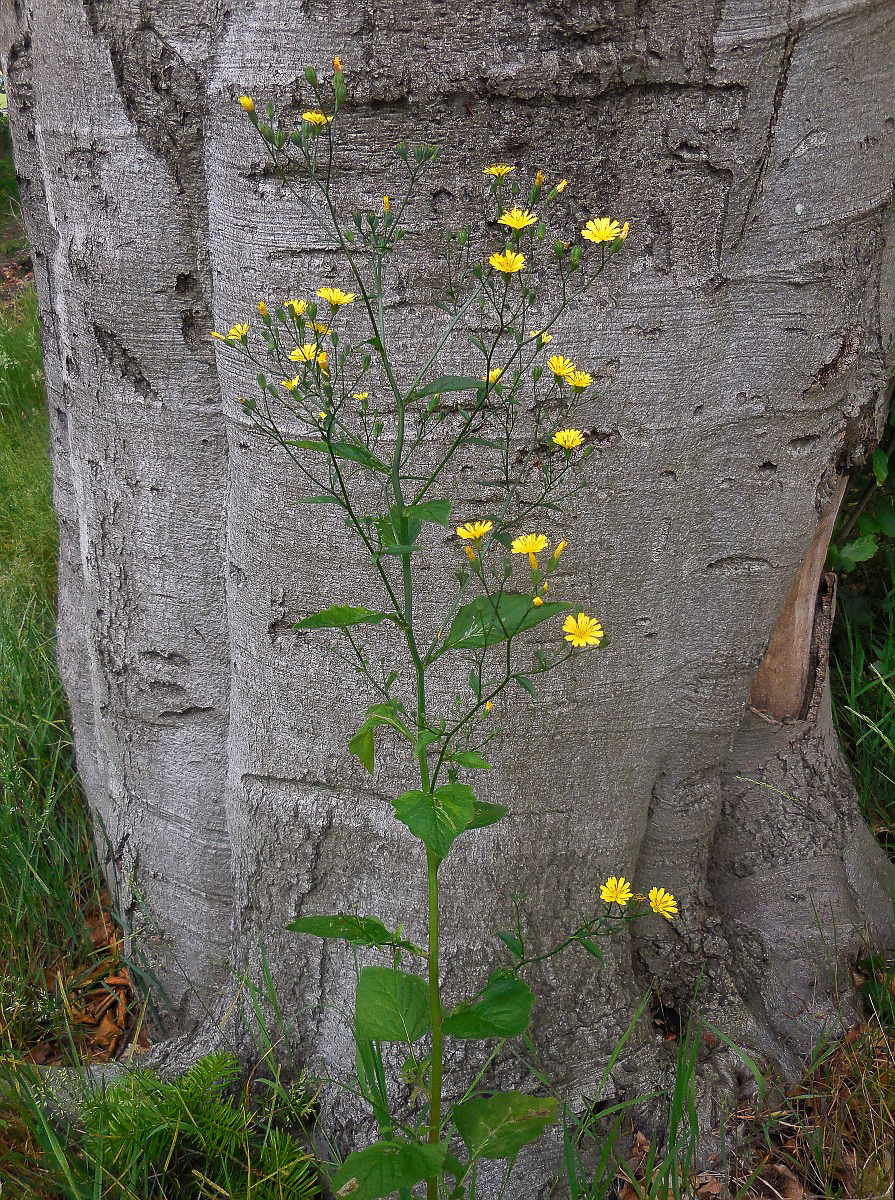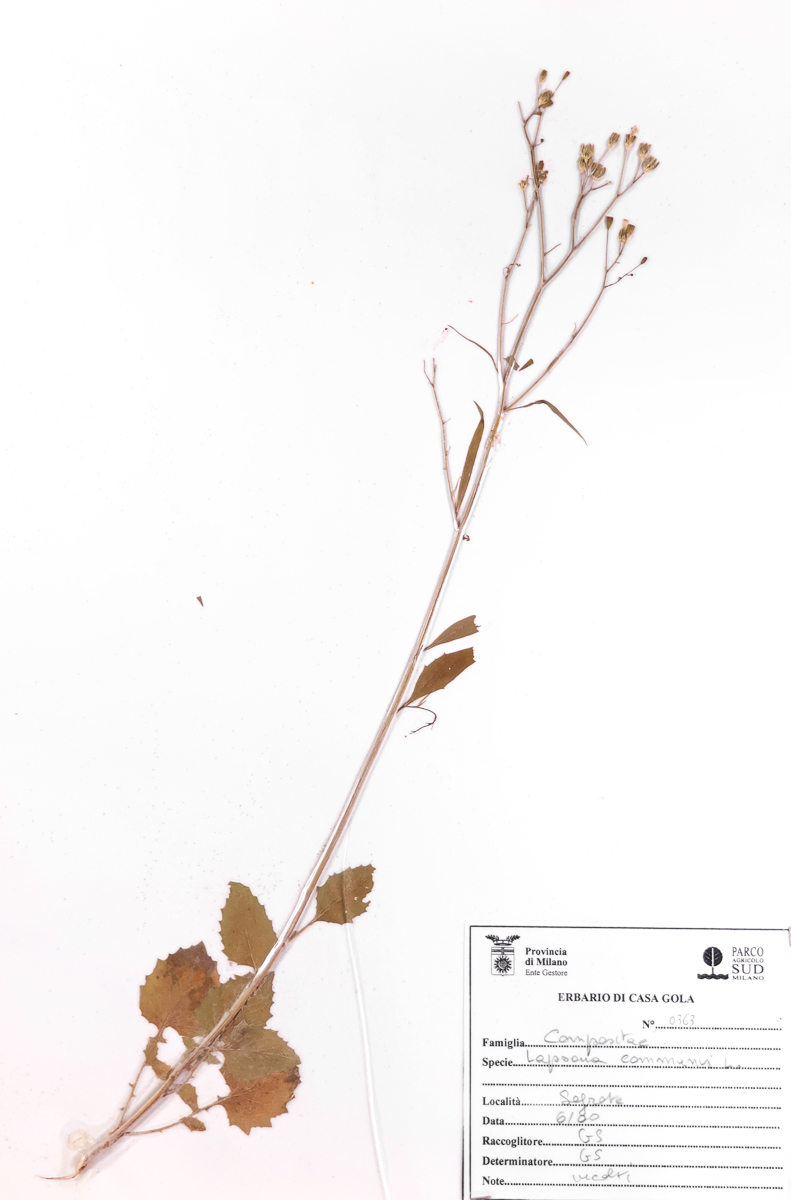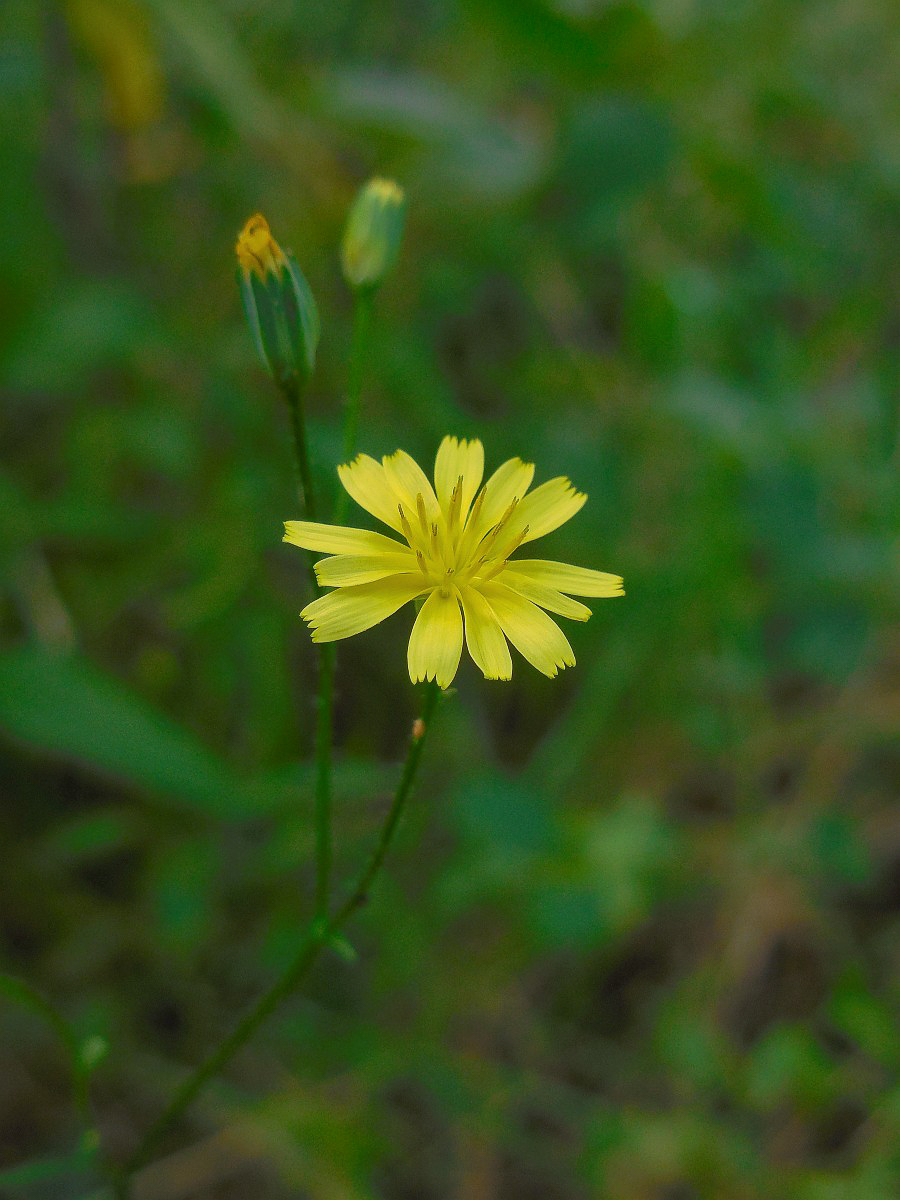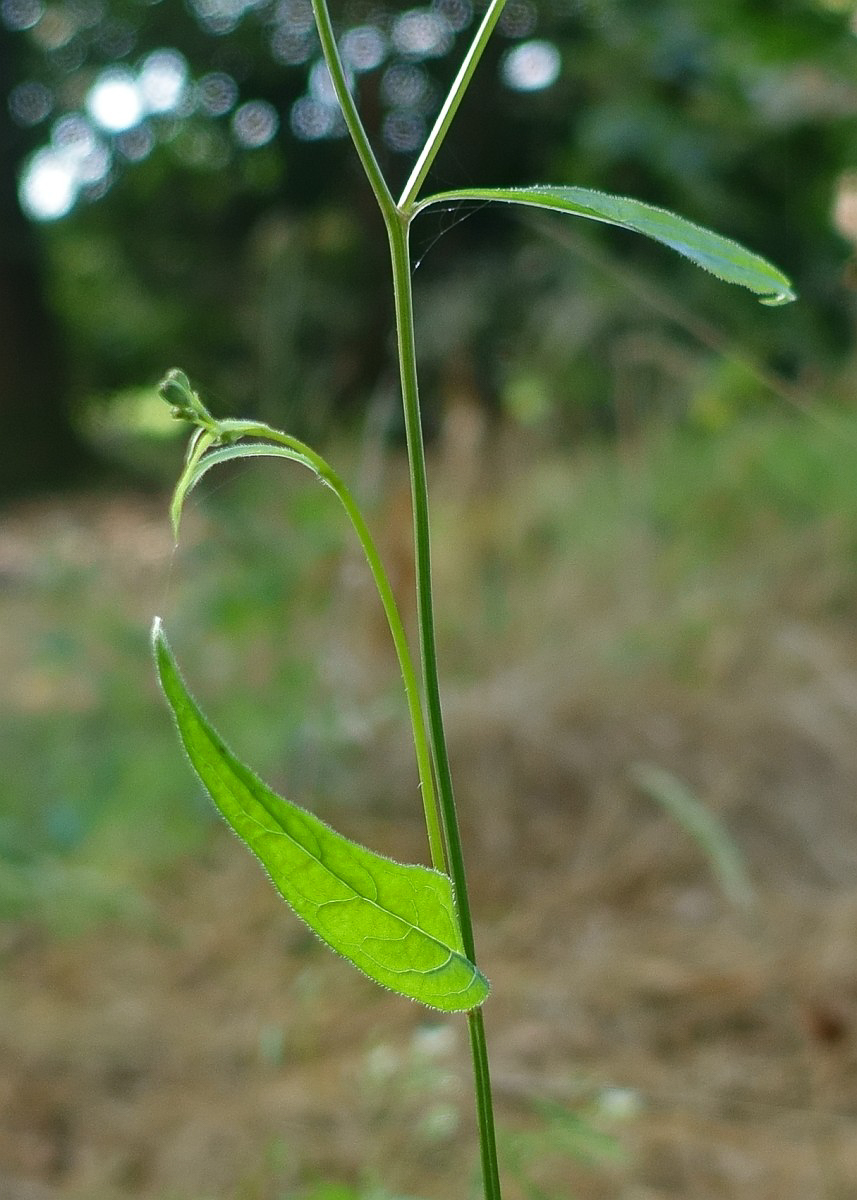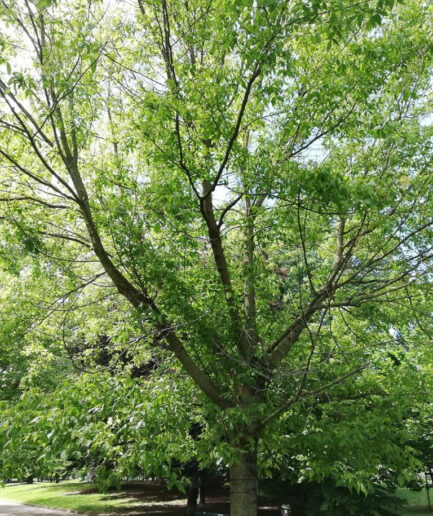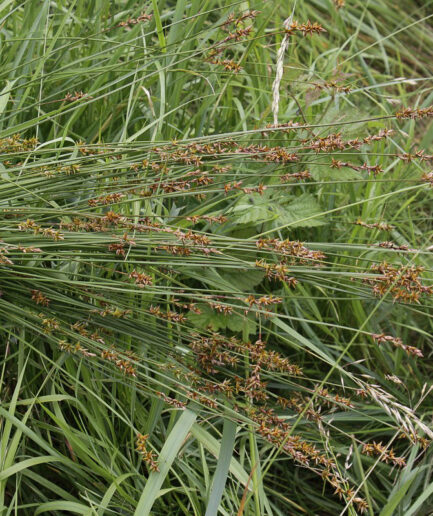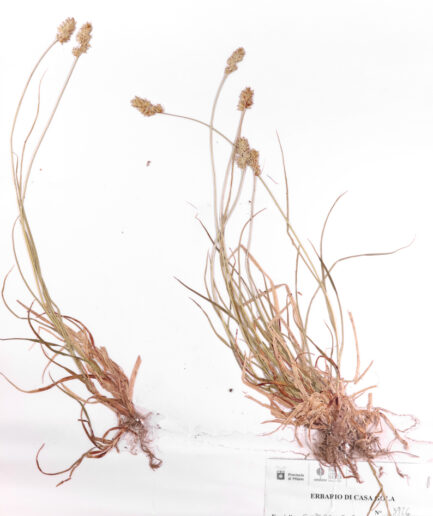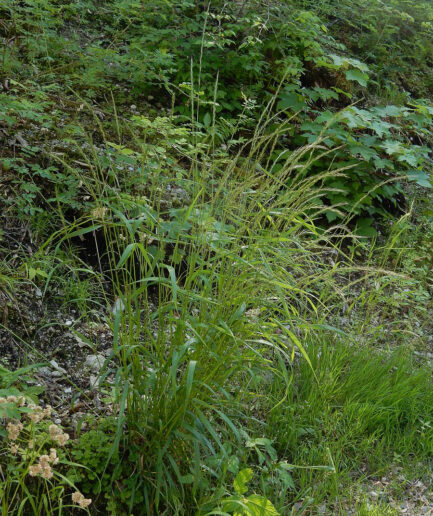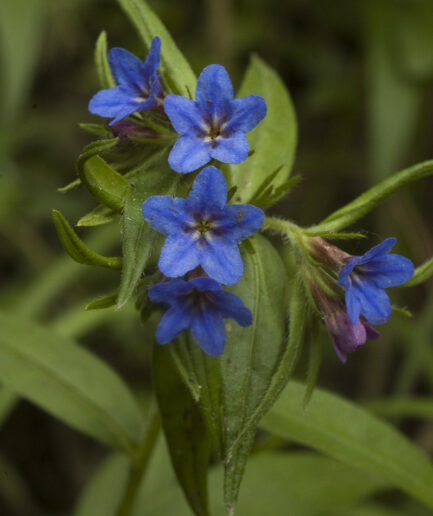Common Nipplewort
Scientific Name: Lapsana communis L.
Family: Asteraceae
MORPHOLOGY
Habit and size: An annual herbaceous plant, ranging from 20-120 cm in height, glabrous or villous, with a fibrous root.
Stem: The stem is erect, slender, branched-corymbose in the upper part, containing a milky juice.
Leaves: Lower leaves are petiolate, lyrate, sinuate-toothed acuminate, with the terminal lobe larger. Stem leaves are sessile, ovate-lanceolate, entire-toothed.
Flowers: Inflorescence is a corymb with numerous small, all ligulate, 6-7 mm light yellow flower heads. Each flower head is surrounded by a conical glabrous involucre with linear, keeled inner bracts, the outer ones very short, oval. Blooms from April to October.
Fruits and seeds: The fruits are curved achenes, longitudinally striated, without pappus.
DISTRIBUTION AND HABITAT
Present throughout Italy in scrublands, coppices, broad-leaved forests, where it exploits the abundant organic matter in the soil, it is also found in gardens, ruins, and anthropized areas, from sea level up to 1,400 m.
USE
It has refreshing and antidiabetic properties. Before taking any plant-based product (medicinal or non-medicinal) for therapeutic or similar purposes, it is always advisable to consult a doctor beforehand. In rural areas and hillsides, it is still used in mixed vegetable dishes, both cooked and raw, for its purifying and emollient properties. Its bitter taste resembles that of dandelion.
INTERESTING FACTS
According to the doctrine of signs, which established a similarity between the closed flower heads of the plant and mammal nipples, it created a long-standing belief that it could cure and alleviate nipple inflammation in women from milk blockages after weaning. For these conditions, fresh plant juice mixed with fat was used, or fresh crushed and chopped leaves were applied to the affected area. It was so named “papillaris,” from the Latin “papilla” meaning nipple, and was popularly known as the herb of nipples.
Photo: Not subject to licensing by Saxifraga, Ed Stikvoort, and Ab H Baas.


